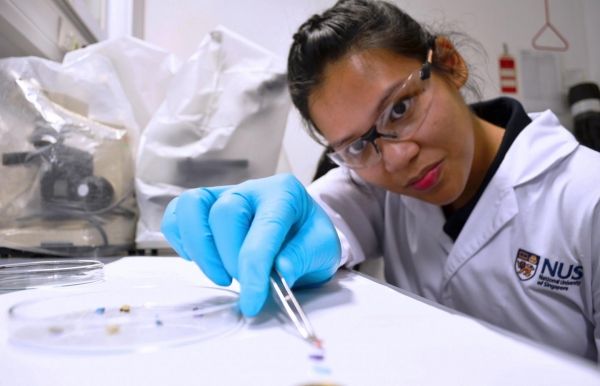A field survey conducted by a team of marine scientists from the National University of Singapore (NUS) has uncovered toxic bacteria living on the surfaces of microplastics, which are pieces of plastic smaller than 5 millimetres in size, collected from the coastal areas of Singapore. These bacteria are capable of causing coral bleaching, and triggering wound infections in humans.
The NUS team also discovered a diversity of bacteria, including useful organisms – such as those that can degrade marine pollutants like hydrocarbons – in the plastic waste.
Dr Sandric Leong, research lead and Senior Research Fellow at the NUS Tropical Marine Science Institute (TMSI), said, “Microplastics form a large proportion of plastic pollution in marine environments. Marine organisms may consume bits of microplastics unintentionally, and this could lead to the accumulation and subsequent transfer of marine pathogens in the food chain. Hence, understanding the distribution of microplastics and identifying the organisms attached to them are crucial steps in managing the plastic pollution on a national and global scale.”
This study is the first to examine the bacterial community on microplastics found in tropical coastal regions. The results were first published in the journal Science of the Total Environment on 17 November 2018.
Read more at National University of Singapore
Image: This is NUS doctoral student Emily Curren examining microplastic samples collected from coastal areas of Singapore. (Credit: National University of Singapore)


